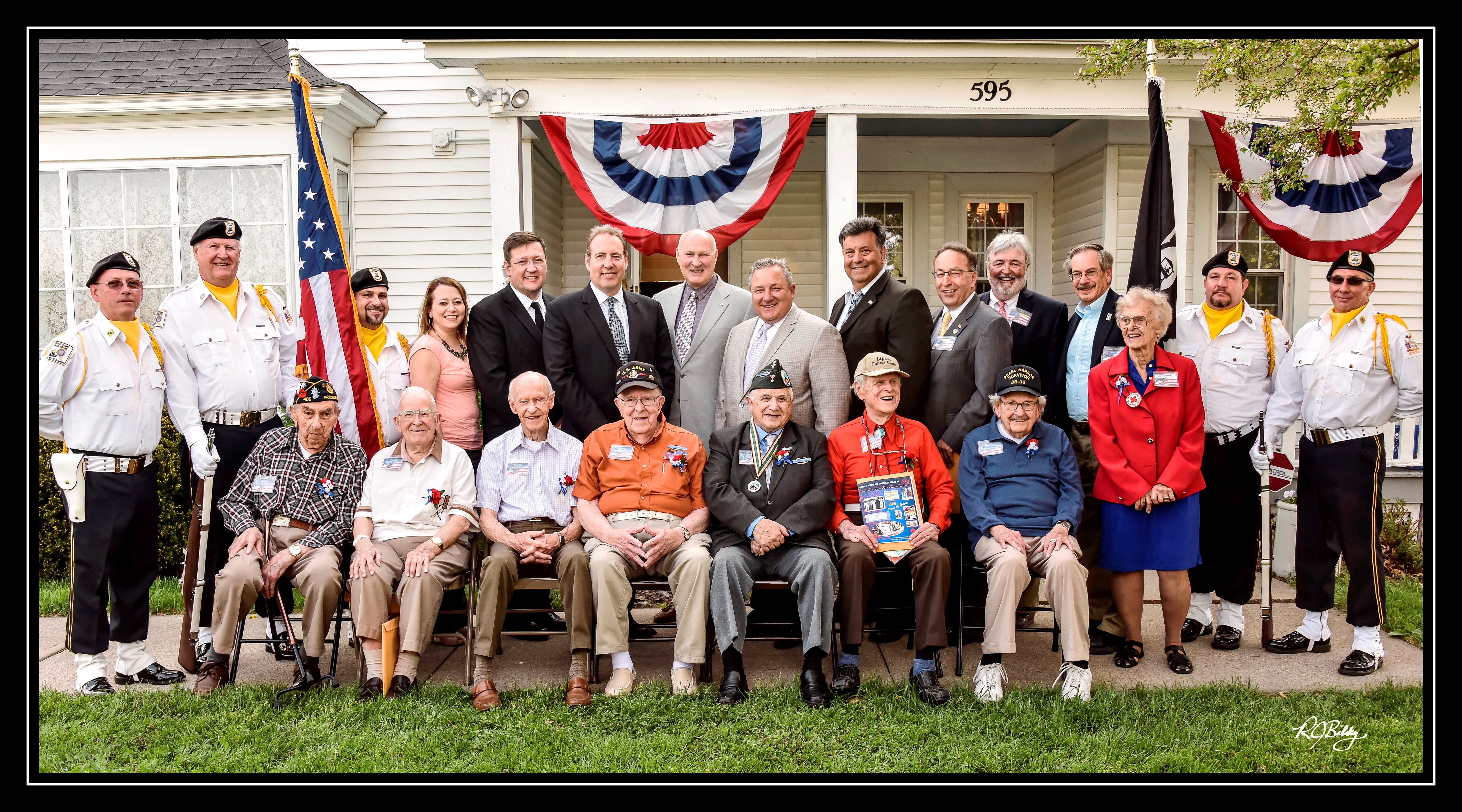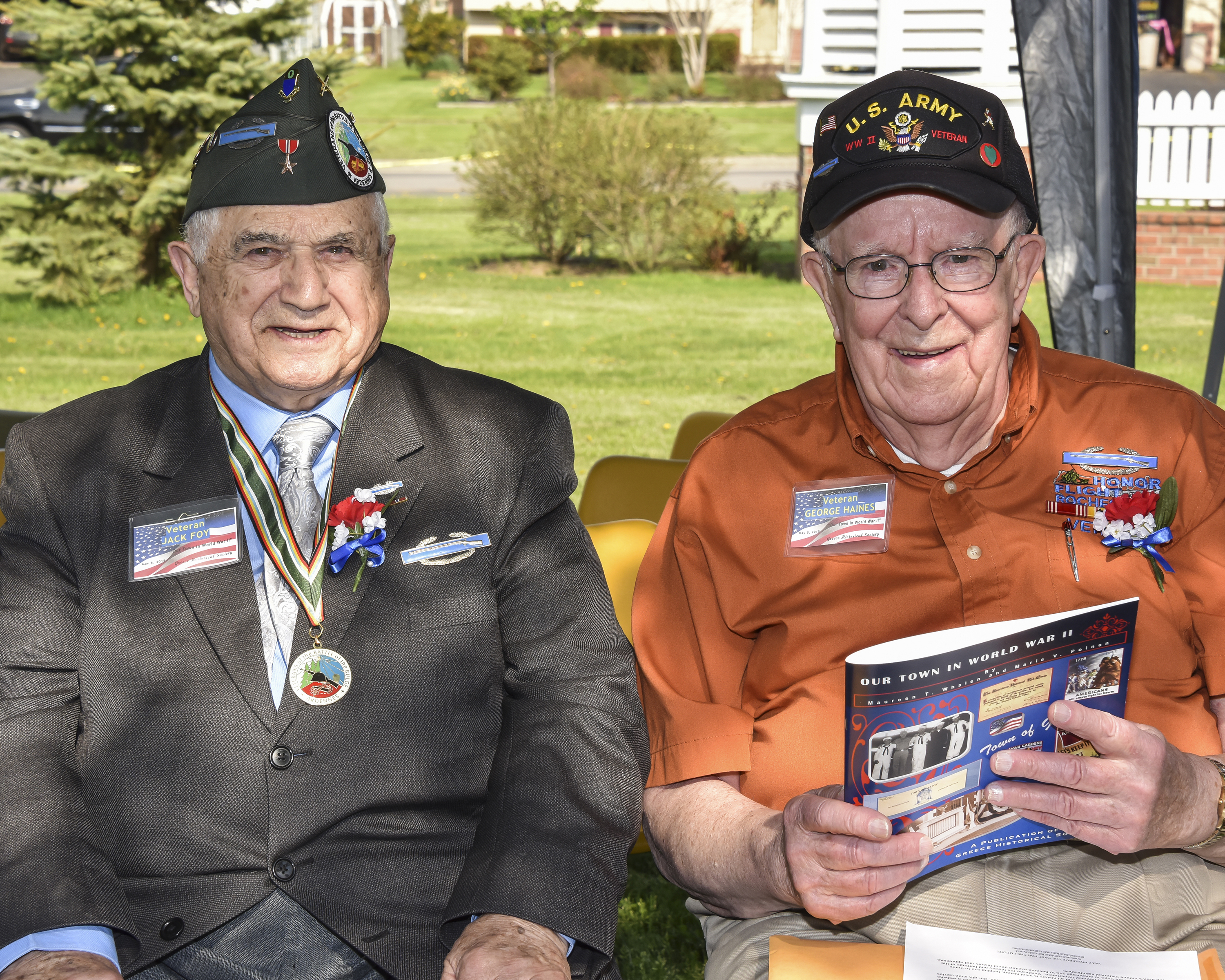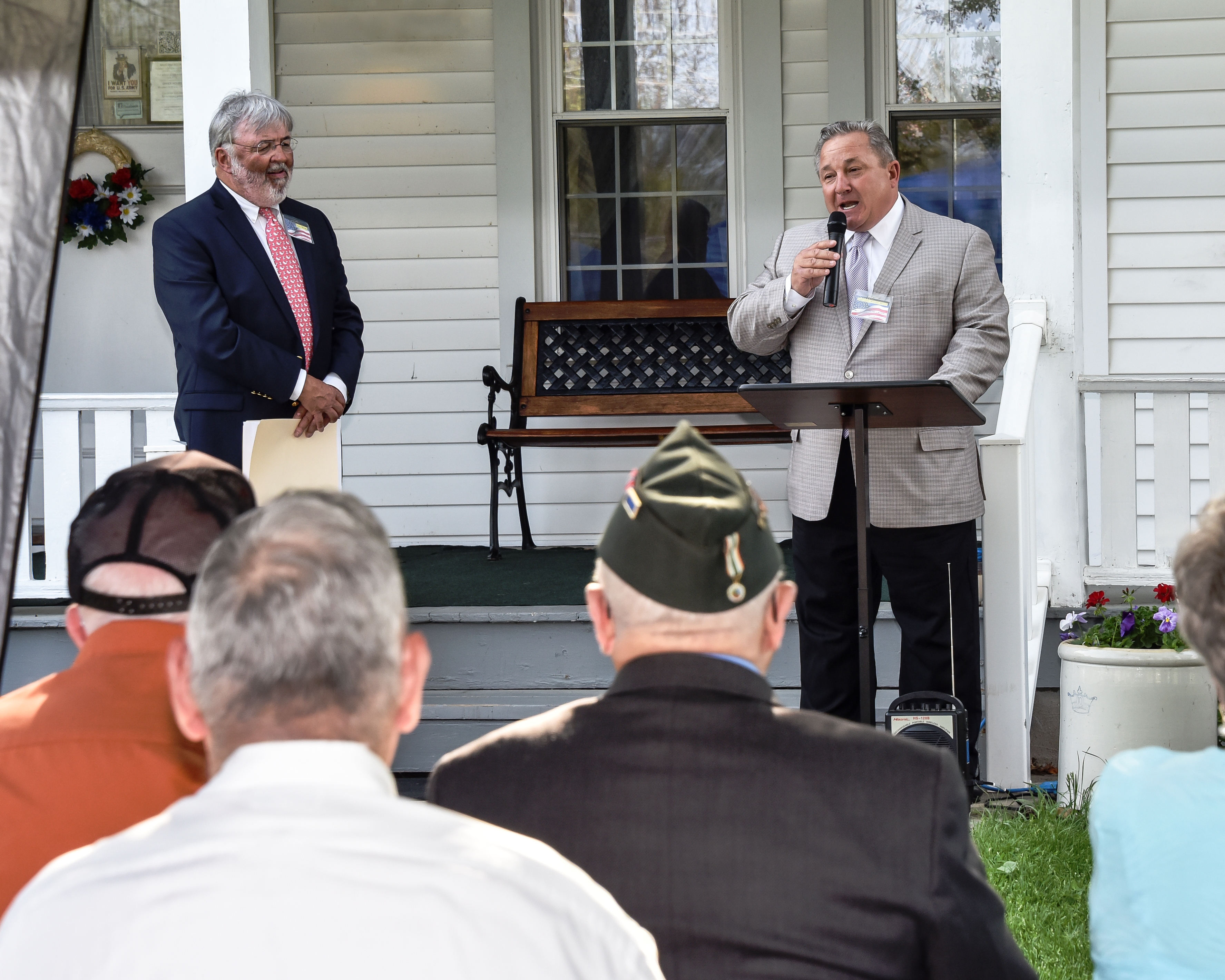Today we will look back at some of the illnesses and diseases that affected the lives of many children.
When we conduct walking tours of local cemeteries, we get asked about all the small tombstones. Yes, they usually indicate the grave of a child. Here in Our Mother of Sorrows Cemetery are the graves of eight Newell children: Anna, Edward, George, another George, Hattie, Henry, Julia, and Willard.
The child mortality rate in the United States, for children under the age of five, was 462.9 deaths per thousand births in 1800. This means that for every thousand babies born in 1800, over 46 percent did not make it to their fifth birthday. Over the course of the next 220 years, this number has dropped drastically, and the rate has dropped to its lowest point ever in 2020 where it is just seven deaths per thousand births. Although the child mortality rate has decreased greatly over this 220-year period, there were two occasions where it increased; in the 1870s, as a result of the fourth cholera pandemic, smallpox outbreaks, and yellow fever, and in the late 1910s, due to the Spanish Flu pandemic. source: UN DESA; World Population Prospects 2019, Online Edition
Most of the Newell children lived less than a year, one died at the age of three, and the longest surviving child died at the age of 12. In the United States during the 1850s and ‘60s, 42% of children died before the age of five. There were numerous communicable diseases prevalent in the 19th century. These included smallpox, diphtheria, measles, meningitis, scarlet fever, and whooping cough. Cholera infantum was also common.
One historian wrote: “Up until the 1930s, infant mortality, especially in the cities during the summers, was ferocious. Infant susceptibility to a variety of respiratory and gastrointestinal disorders was exacerbated by poor sanitation, overcrowded tenements, contaminated milk supplies, and lack of refrigeration.” Cholera infantum was a gastrointestinal disease of infants and children. “Various strategies were devised to remove infants from danger during the hottest months.” One strategy was tent hospitals. One was set up in the Town of Greece along Lake Ontario on Beach Ave where Waterview Heights Rehabilitation and Nursing Center and some parts of where Lakeshore Country Club holes 16 and 17 were used as walking paths before the country club was formed in 1932 on the Greenleaf Estate.
Believing that the pure air and salubrious effects of breezes off Lake Ontario could benefit the health of sickly children, Dr. Edward Mott Moore established the Infants Summer Hospital circa 1885 on land


The land was situated on a bluff overlooking Lake Ontario just west of the village of Charlotte. The tent hospital was on today’s Beach Avenue. The Greenleaf’s Summer property was 167 acres. His neighbors were the Flemings, the Lings, Mrs. G.C. Latta, J.G. Martie, David Tennison, Orin Hoxey, and the McManus.


They first erected tents to house sick children. Ample accommodations were provided for mothers who expected to stay with their children. There were no charges for any service or care.
By 1888, some permanent buildings had been erected.


Once milk began to be pasteurized there were fewer cases of cholera infantum and children suffering from cardiac conditions or orthopedic injuries needing a lengthy recuperation were admitted here for care.
The Map to the right is the 1932 Plate Map of the City of Rochester which shows the Greenleaf Property subdivided at the Clarence S. Lunt Property.

This 1935 Plat Map shows a better close-up of the Infants Summer Hospital listed on the map.
In 1929 the name was changed to Convalescent Children’s Hospital. It operated at the Beach Avenue address until 1960. Today the building is Waterview Heights Rehabilitation and Nursing Center.

Another challenging disease for doctors was diphtheria,
What is Diphtheria?
The definition of diphtheria according to the Oxford Dictionary is an acute, highly contagious bacterial disease, causing inflammation of the mucous membranes, formation of a false membrane in the throat that hinders breathing and swallowing, and can cause potentially fatal heart and nerve damage by a bacterial toxin in the blood. It is now rare in developed countries because of immunization.
Since the disease was so contagious people were quarantined for a range of 12 days to several weeks. Emma Pollard Greer writes in her History of Charlotte that an outbreak in the summer of 1881 delayed the opening of school in the fall.

In 1913, a boy in the Brown family of West Greece was stricken; his older brother was a teacher at the Brick School, District School No. 10 on Lake Avenue. That school was shut down in the hopes of stopping the spread of what was also called “the choking disease.” You can learn more about this district school in Bicentennial Snapshot # 43
A native of a small town in Illinois, Dr. George Sanders settled in Greece after serving in World War I. He would maintain a practice in Greece for almost 50 years, serving as the Town health officer as well from 1920 to 1944, and as the school district’s physician from 1960-1968.
You can read the digitized copy of his autobiography here on our site

His home and office were on Ridge Road in a beautiful old house.
In his reminiscences, Dr. Sanders describes his campaigns to keep children in Greece safe from the communicable diseases that so often took the lives of children at an early age—smallpox, measles, scarlet fever, and diphtheria. Using horses who were immune to it, an anti-toxin was developed to inoculate children against diphtheria.


Dr. Sanders wrote: “The year before I arrived in Greece the last case of smallpox occurred. Vaccinations had been started and with everyone vaccinated today the disease has disappeared, but diphtheria was a dreaded disease; I got in on the first diphtheria anti-toxin treatments.”

“The groundbreaking campaigns against diphtheria in the 1920s and ’30s evolved into a universal program of infant vaccination in the United States. A DTP vaccine, created in the 1940s, combined diphtheria and tetanus toxoids with an inactivated version of the bacteria that causes whooping cough (pertussis).”
Polio Outbreak
Between 1945 and 1955, those earlier diseases were supplanted by another that struck terror in the hearts of parents—polio. Polio (short for poliomyelitis, once called infantile paralysis), is used to strike thousands of children in the United States each year. According to one historian: “By mid-century, polio had become the nation’s most feared disease. And with good reason. It hit without warning. It killed some victims and marked others for life, leaving behind vivid reminders for all to see: wheelchairs, crutches, leg braces, and deformed limbs. In 1921, it paralyzed 39-year-old Franklin Delano Roosevelt, robust and athletic, with a long pedigree and a cherished family name. If a man like Roosevelt could be stricken, then no one was immune.” Look at this picture of him attending the Mother of Sorrow’s Church centennial celebration on June 8, 1930, we may not know what was to the right of him in the picture but look at how the Governor left hand is gripping the right arm of his secretary Guernsey T. Cross, a certain way, so that FDR could stand up for this picture, in the back of him he may have some sort of device to help him stand up because of the state of paralysis from polio but because this was a photo for the Public we do not have the full picture to the right of the governor in this picture.



In 1945, there were 12 Grecians suffering from polio. More than half the men, women, and children attacked by polio recovered with no enduring effects 29 percent were left with a slight residual paralysis, 18 percent remained handicapped, and three percent died. It was most fatal to children under the age of 10.
Polio was one of the costliest diseases known to medicine. Some Insurance Companies set up insurance policies for people with Polio to be able to cover the costs of Polio treatments and medical bills related to pay for care if someone had Polio, yet today the same insurance companies no longer will set up coverage to pay for treatments for Cancer, HIV/AIDS, COVID-19 related health issues or other diseases because they are now at the whims of shareholders and Wall Street over the policyholders.


Treatment of the disease in its acute stage required constant skilled nursing, extensive physical therapies, and frequently expensive equipment. That care and treatment often extended for months afterward.
“During the epidemics of the 1930s, 1940s, and 1950s, some patients with serious breathing problems were placed in an “iron lung,” a cylindrical chamber that surrounded a patient’s body from the neck down, which used rhythmic alterations in air pressure to force air in and out of the individual’s lungs.” In 1950, realizing that their iron lung machine was better off in a hospital setting, the Barnard Fire Department donated it to Strong Memorial Hospital. We will get to Barnard Fire Department in Snapshot # 50. And in 2020 at least one company at least in the state of Kansas started to make a modern-day version of the Iron Lung to help build them because of the short supply of ventilators in the country because of COVID-19. As of this post currently, there are at least 2 people left living using Iron Lungs in the United States.


Every January for more than 10 years, the women of Greece participated in the campaign to raise money to find a vaccine to prevent polio. The campaign culminated in the Mothers March, a night when everyone was asked to leave their porch lights on and the mothers went from door to door in their neighborhoods soliciting donations. Every home in the town was canvassed. In 1952 almost 2,000 mothers participated. It was an all-out effort joined by many others in the community to contribute to the campaign to fund research for a vaccine.
Every year the Men’s Brotherhood of Bethany Presbyterian Church held a dance; two of the organizers were polio survivors. There were collection boxes in all the schools. The Paddy Hill Players put on a benefit show.


And every year they hoped for an effective vaccine. That hope was realized in 1955; The Jonas Salk vaccine was first to be approved that year; it was made from completely inactivated polio viruses and injected into the body. The oral vaccine developed by Albert Sabin was made from weakened polio viruses. It was introduced in 1963. A kindergarten class in a Greece school was a testing site for the Salk vaccine; the children were given two shots over a two-week period in May 1954. They were part of the largest human experiment in history. Although recently in the news, still, because of the polio vaccine, cases in the United States are very rare now.
Thank you for joining us today, next week we look at Gordan A. Howe













































































